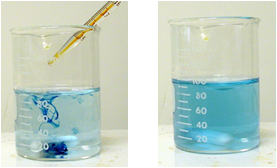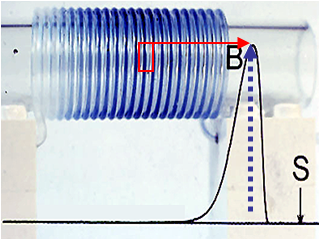0.1.2.
From Equilibrium to Controlled Dispersion
All reagent-based assays depend on principles established almost 300 hundred years ago, when gravimetry was the only tool available for quantitative analysis. In order to recover a target analyte “quantitatively,” an excess of precipitating reagent is used, solutions are mixed thoroughly, and sufficient time is allowed to reach reaction equilibrium.
When titrimetry was developed (Lavoisier 1789), equilibrium
between analyte and titrant was achieved stepwise, until the
equivalence point was reached. Since then, the principles of homogenous mixing and reaction equilibrium have been applied to all reagent-based techniques, regardless of whether they are carried out manually or automatically, in a batch or flow format.

Homogenous mixing
& equilibrium

Flow Injection Gradient
The principle of reaction rate measurement in wet chemistry (Wilhelmy 1850)
and enzymatic assays (Michaelis 1913) became widely accepted only 50 years
ago, when automation and downscaling of “beaker chemistry” removed
limitations imposed by manual solution handling. Thus, while for reaction rate based assays, the reaching of chemical equilibrium was no longer necessary, the first principle of quantitative analysis, i.e., fast and thorough mixing of an entire analyzed sample with an excess of reagent, remained necessary to obtain precise and accurate results. Interestingly, flow based techniques such as chromatography (Tswett 1906) and the reagent-based, air segmented technique (Skeggs 1957) adhere to the principle of homogenous mixing. In chromatography, peaks are integrated to account for all analyte molecules. Air segmenation in Skeggs Autoanalyzer not only separated the adjacent samples, but promoted homogeneous mixing of sample and reagents within each segment, in order to reach a “steady state.”
Flow injection techniques are based on an entirely different concept. As the injected sample moves towards and through the detector, two processes, kinetic in nature, occur simultaneously: the physics of sample dispersion and chemical reactions between sample and reagent(s). None of these processes reaches equilibrium, yet the dispersion process is so precisely controlled, that samples and standards are processed in exactly same way, and therefore the thus obtained transient signal yields reproducible results.









